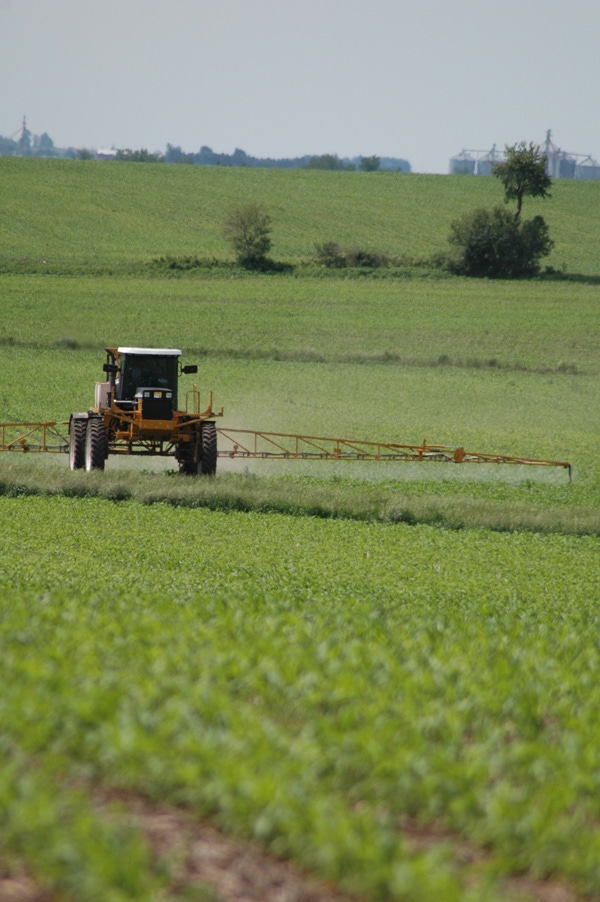June 19, 2012

Continued dry weather in areas of Ohio will affect the activity of postemergence herbicides, and this can mean a reduction in weed control compared with years when soil moisture is adequate. A couple of decades of accumulated knowledge on dry weather and postemergence herbicide applications allows us to offer the following management suggestions, although none of these are probably hard and fast rules.
Apply when weeds are small. This is probably the single most important step to maintain POST activity in dry conditions. Large and old plants become even more difficult to control when subject to extended dry conditions. Keep in mind also that prolonged dry conditions suppress additional weed seed germination, so the risk of many weeds emerging after an early POST treatment is reduced.
Optimize adjuvants. Labels for some POST herbicides provide suggestions for revised adjuvant rates or types under dry conditions. A general rule for adjuvant effectiveness under dry conditions is: MSO > COC > NIS, although this does not apply to all herbicides. Adding AMS or 28% can also improve activity.
Dry weather does not usually increase the severity of injury to the crop from herbicides, unless coupled with very hot conditions. However, continued dry conditions after the crop has been injured can reduce its ability to recover from injury, or extend the time needed for recovery. Soybeans are fairly small in many fields right now, and dry weather is limiting the rate of growth. One of our concerns always is using herbicide mixtures that cause considerable injury to small soybeans in late June, because we start to run out of time for soybeans to recover to maximum yield potential. Applying when weeds are small will minimize the need for more aggressive herbicide mixtures.
Do not load the spray tankwith a multitude of herbicides and snake oils to try to control marestail. If you cannot control it with glyphosate plus either Classic or FirstRate, then adding other herbicides will not help. Walking fields to remove plants by hand, or at least cut the tops off later in the season to prevent seed production, is probably the best option at that point.
Continuation of dry weather throughout the summer will reduce the rate of dissipation in soil of certain herbicides, possibly increasing the risk of carryover into next year’s crop. We have experienced problems with Scepter carryover following dry summers. Scepter carryover is most likely when the field remains dry from immediately after application through summer, and can be less likely where the field received some substantial rainfall soon after application. Callisto and Flexstar are also capable of causing carryover injury, when applied fairly late and subjected to continued dry conditions. Soil pH is still the most important factor for chlorimuron degradation, and it is largely not affected by soil moisture.
You May Also Like




